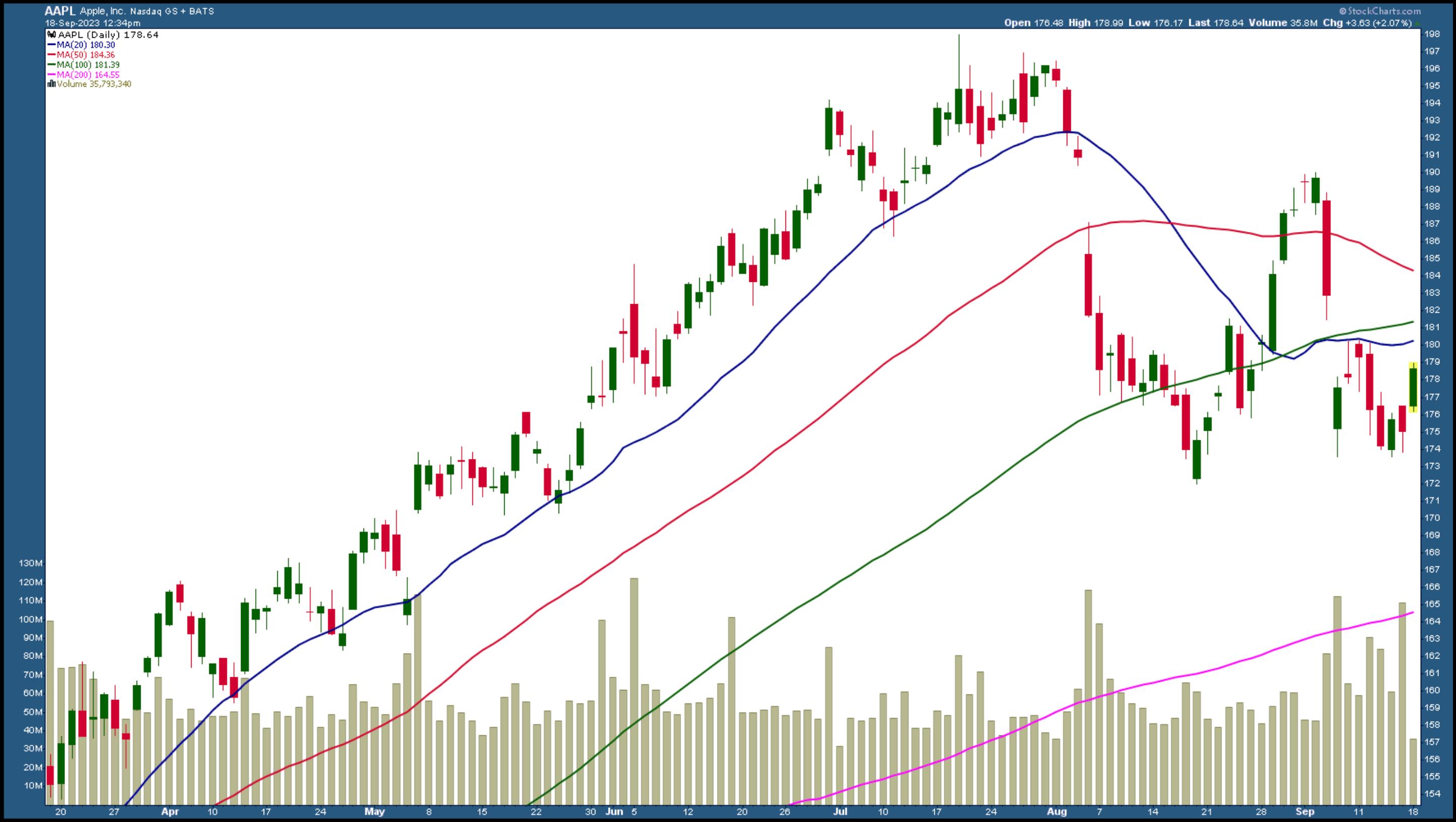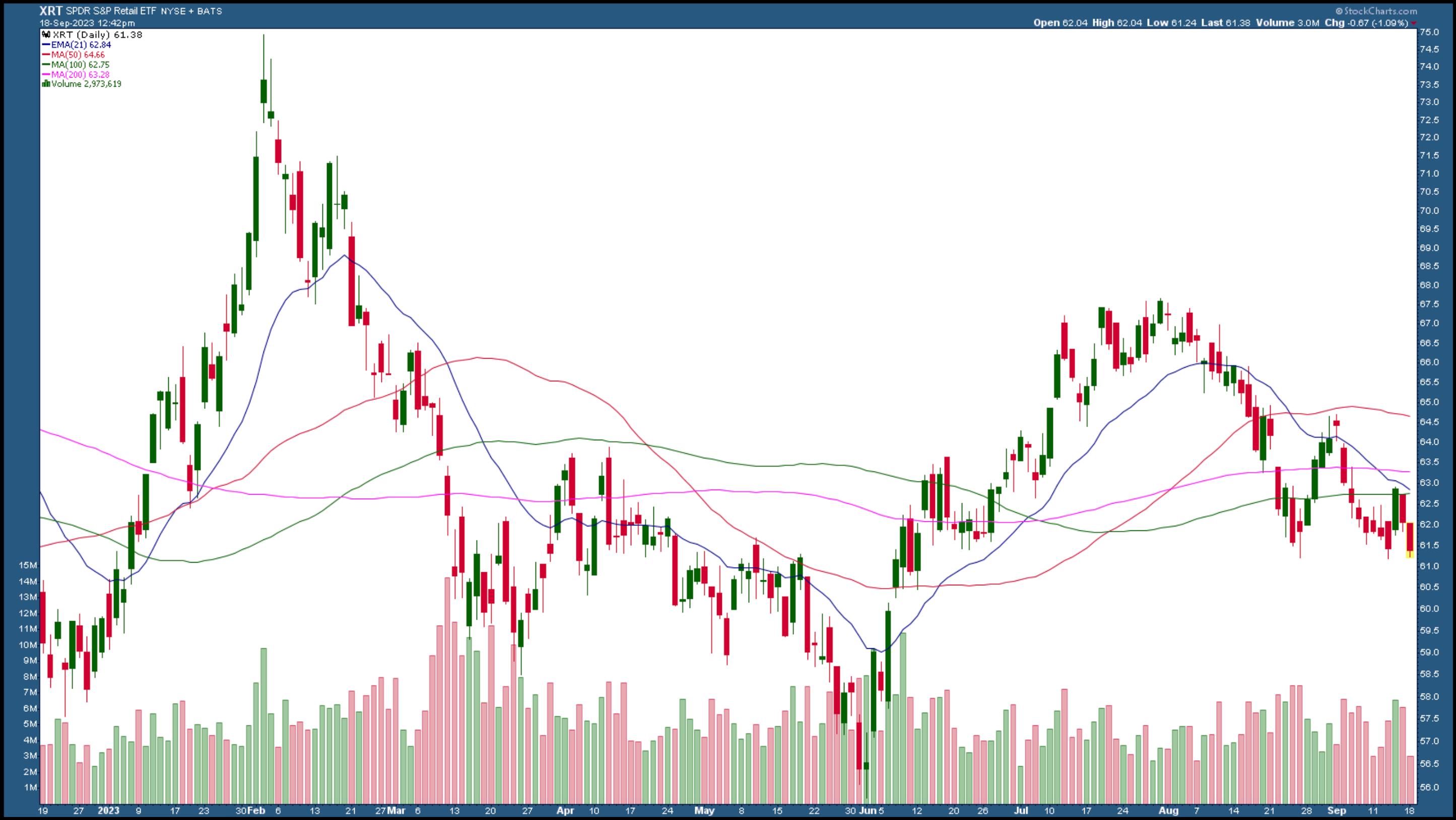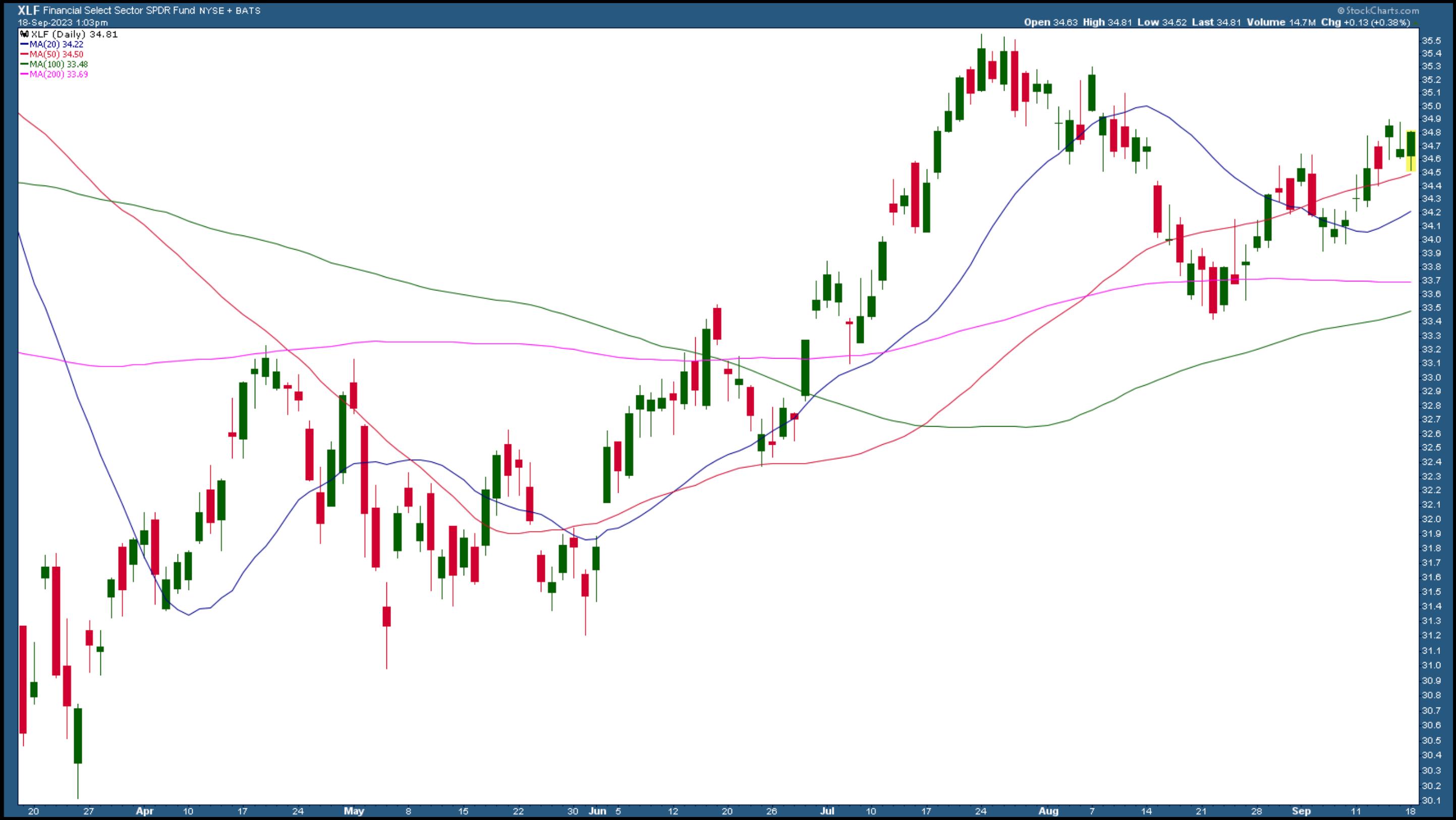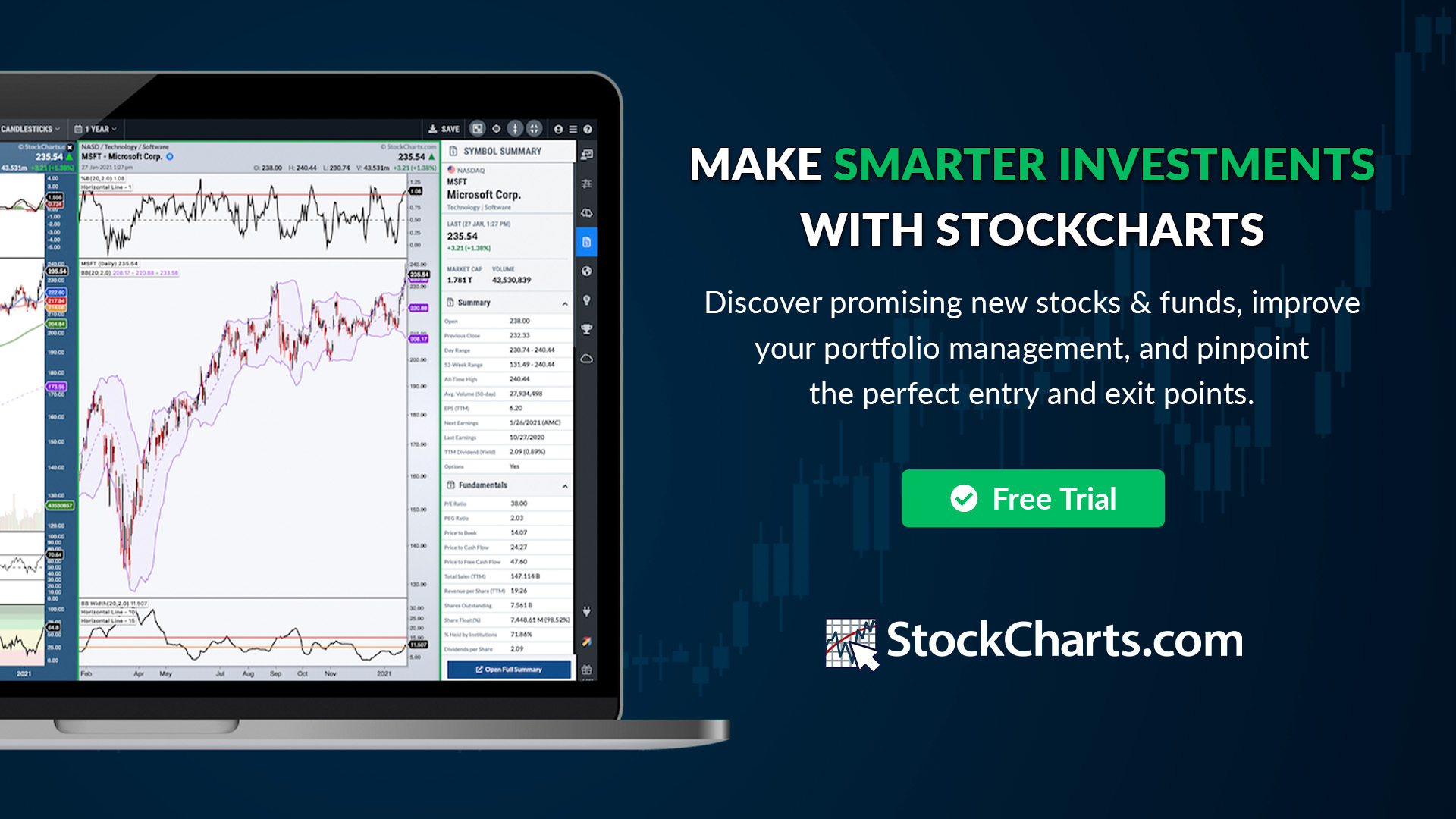TAKEAWAYS
- Although September is considered a seasonally weak period for the stock market the fourth quarter is typically a strong period
- There's a high probability of the S&P 500 Index reaching a new high in Q4
- Growth stocks, Industrials, Financials, and Commodities could all see positive movement in Q4

Traders and investors don't generally look forward to September. Besides being the end of summer vacations and back-to-school season, the stock market usually hits its weakest point at this time of the year. But that doesn't necessarily mean you should stay away from the stock market in September.
If you patiently wait for the pullback to unravel, it could present investment opportunities for the last quarter of the year. And given that 2023 is a pre-election year, it's usually a strong one for equities. But which market segment should you invest in, and which ones should you stay away from?
In a recent StockCharts TV episode of Charting Forward, recorded on September 12, 2023, Chief Market Strategist of StockCharts.com, David Keller, CMT, spoke with the following three technical analyst veterans:
- Mish Schneider, Director of Trading Education at MarketGauge
- Tom Bowley, Chief Market Strategist of EarningsBeats.com
- Julius de Kempenaer, Creator of Relative Rotation GraphsⓇ and Senior Analyst at StockCharts.com
In it, the group discussed how the broader market went through a pullback in August but has since recovered. Given September is considered a weak month, does that mean the stock market could see another pullback before moving back up? Which areas of the market are likely to perform well, and which ones are likely to be the laggards in Q4? Let's find out.
"I'm not as bearish as I should be. The risk factors we look at say "risk-on" is the way to go." —Mish Schneider
So, assuming nothing out of the ordinary happens, Mish's outlook is positive. The stock market has remained strong despite rising interest rates, inflationary pressures, and rising oil prices. When the stock market is trending higher, there's no reason to fight that trend.
"We are in the summer doldrums and could see one more drop before going higher. But I'm also bullish." —Tom Bowley
Earlier in the year—mid-July—sentiment indicators showed bearish signs, and some negative divergences were emerging in the broader indexes. But that has reversed.
"If you look at a daily chart of the S&P 500 ($SPX), there is a series of higher highs and higher lows since the August pullback. I wouldn't be surprised if the S&P 500 exceeds 4600 in Q4." —Julius de Kempenaer
Well, you can't argue there. The way things are now (short of systematic risk hitting the market), the stock market seems to be hanging in there. It's almost as if it's waiting for a catalyst to push it higher.
The pullback of the Magnificent Seven stocks was healthy and perhaps a much-needed one. Apple (ticker symbol: AAPL) hit a rough patch when China restricted the use of the iPhone. But if you look at a daily chart of AAPL (see below), it doesn't paint a doom-and-gloom picture.

CHART 1: DAILY CHART OF APPLE, INC. Although Apple's stock price faced some pressure, it still didn't take out its August low.Chart source: StockCharts.com. For educational purposes.
The stock hasn't taken out its August 18 low of $172 and could potentially reverse. If a hard-hit stock isn't looking bearish, is there any reason for investors to question the strength of the equity market?
What Could Go Wrong
For Mish, it would be the retail space. Consumer behavior is strongly correlated with the health of the US economy. And if consumers cut back on their spending, which is possible when inflationary pressures are ubiquitous and interest rates are high, it could add some stress to the broader market.
So far, there are no signs of a drop in retail sales. August retail sales were up 0.6% month over month—higher than the 0.1% increase expected by economists. A large part of that rise can be attributed to higher gasoline prices. If you strip away auto and fuel from the data, retail sales rose by a mere 0.2%. This could indicate that consumers may face pressure, so it's best to keep an eye on the retail sector by closely watching the SPDR S&P Retail ETF (XRT).

CHART 2: THE RETAIL SECTOR HELPS GAUGE CONSUMER SENTIMENT. The August high didn't come close to its February high. Does that mean retail spending could decline in the near future?Chart source: StockCharts.com. For educational purposes.
One interesting point Mish made was that the uptrend in XRT from June to July (2023) didn't come close to the February 2023 high. And even though XRT saw a jump due to the positive retail sales number, there's no sign of an uptrend—higher highs and higher lows.
Rising oil prices could put pressure on the equity market. While energy stocks are rising, Julius points out that other sectors, such as Consumer Discretionary, Technology, and Communication Services, are getting ready to gain strength. It's likely the Magnificent Seven will take the lead again, which is encouraging, given that the Energy sector is looking overbought.
Sector Relationships Are Important
Relationships between sectors often hold the key to future market action. Tom Bowley pays close attention to the relationships for warning signs. What you hear in the media may not appear on the charts. So, what are the charts indicating?
"In addition to Consumer Discretionary and Technology, Industrials and Financials tend to perform well during Q4," said Tom. So keep an eye on the chart of the Industrial Select Sector SPDR Fund (XLI) and the Financial Select Sector SPDR (XLF). The daily chart of XLF below shows the ETF bouncing off its 50-day simple moving average.

CHART 3: DAILY CHART OF THE FINANCIAL SELECT SECTOR SPDR (XLF). The Financial sector could perform well in Q4. The ETF appears to be bouncing off its 50-day simple moving average.Chart source: StockCharts.com. For educational purposes.
Another sector to watch is Materials. Besides production cuts, Mish feels that the rise in oil prices has to do with shortages. Because of this, we could see a boom in commodities. "Commodities have started to bottom and are picking up steam," added Julius.

Many say, "This time, it's different." And there's some truth to that. When considering buying a stock, there are many factors to analyze. For example, we're in a high-interest rate environment, which generally hurts growth stocks. But we haven't seen that.
"Interest rates are only one part of the equation," mentioned Tom. So, if growth is strong, you can expect growth stocks to continue rising.
The Bottom Line
So all three analysts had a similar opinion of the overall direction of the broader market. However, each had unique perspectives in their analysis. For additional insights on cryptocurrencies, sectors likely to outperform or underperform, and which stocks or charts to watch in Q4, check out the video (link at the bottom of this article).
We're approaching the second half of September, which is typically the worst part of the month. But the broader indexes are showing bullish signs. Even hotter-than-expected inflation numbers didn't spark a selloff. There's still a Fed meeting later this month, but the chances of Fed Chairman Powell making any comments that may cause the market to sway significantly in either direction are slim. Will September's performance be different this year?
Happy charting!






